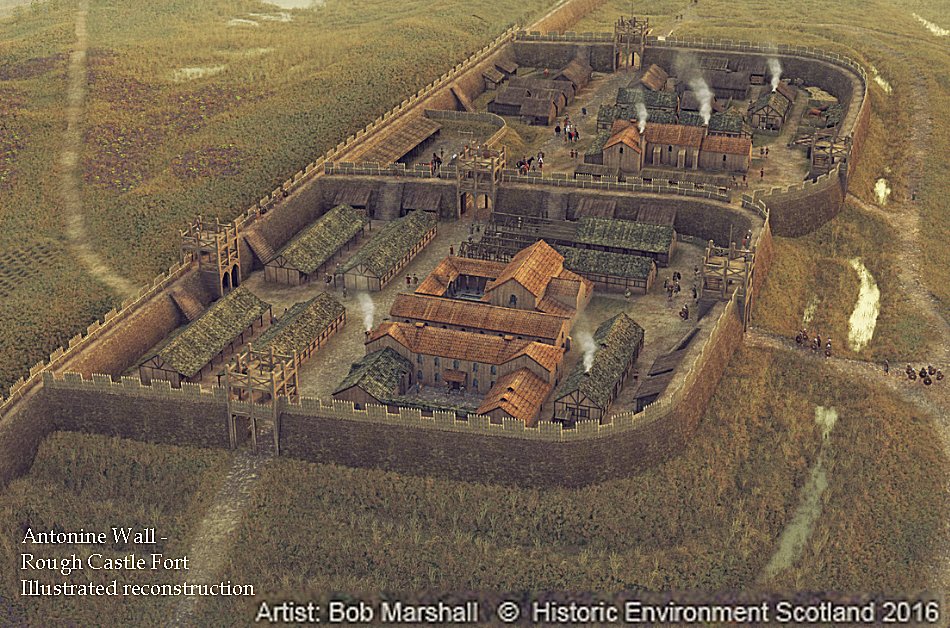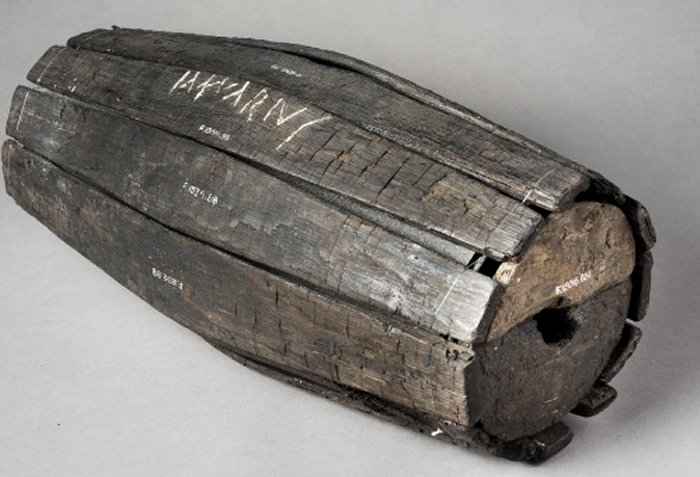Antonine Wall: Impressive Roman Frontier Built By Empire’s Three Legions In Scotland
A. Sutherland - AncientPages.com - The Hadrian Wall lost its importance when Roman Emperor Hadrian's successor, Antonius Pius (138 - 161), launched a successful military campaign in southern Scotland early in his reign and began constructing the Antonine Wall.
Image credit: Artist Bob Marshall - Historic Environment Scotland 2016
The Romans started to build the Antonine Wall in Britain only fifteen years after the
construction of Hadrian's Wall was completed. It is known that the famous Hadrian's Wall was built for both military and economic needs.
The Wall would also prevent raiders from the north from destroying the strategic Roman base at Corbridge in Northumberland.
The Antonine Wall was constructed by another second-century emperor even further north of Hadrian's Wall. The unrest from the north must have been palpable to dictate the construction of such massive formations.
From 155 to 157 CE, the Brigantes revolted in Scotland. They were ancient Britons who, in pre-Roman times, controlled the most extensive section of what would become Northern England -
The Antonine Wall's ruins are less visible than those of the Hadrian's Wall. It is mainly due to the hazardous building material - turf- used to construct the Wall. However, it is evidenced by the construction of foundations that the Romans planned to erect a stone wall.
The soldiers of the Second Augusta, the Sixth Victrix, and the Twentieth Valeria Victrix legions (also responsible for the building of Hadrians Wall) began to construct the Antonine Wall in AD 142 at the order of Roman Emperor Antoninus Pius.
The structure that runs across what is now the Central Belt of Scotland, between the Firth of Forth and the Firth of Clyde, was the Roman Empire's northernmost frontier barrier.
A wooden barrel, with the owner's name, scratched into it. Image credit: Hunterian Museum
The work took about 12 years to complete. These legions erected stone slabs on completion of their work and are the records of the length of the Wall they completed, the emperor's name, and the legion's name.
The slabs are unique because no similar slabs are known from any frontier of the Roman Empire.
Originally six forts were planned (Carriden, Mumrills, Castlecary, Bar Hill, Balmuildy, and Old Kilpatrick), with several fortlets built in between. Later, these fortlets were abandoned, and the next ones were constructed.
The Antonine Wall (named after the Roman emperor Antoninus Pius) was an impressive barrier with a height of 4 meters, 4.3 meters wide, with a large ditch on the north side for reinforcement of defense and a network of roads on the south side for the efficient movement of troops. It was 63 km (39 miles) long, with 19 forts every 3.3 km.
 Left: Found at Carleith, Dunochter, before 1699. Translates as " For the Emperor Antonius Augustus Pius, Father of this country, the Second Augustan Legion completed 3271 feet (of the wall)" Greyish buff sandstone; Right: Unknown provenance - donated to Glasgow University in 1695; Translated as "For the Emperor Caesar Titus Aelius Hadrianus Antoninus Augustus Pius, Father of this Country, a detachment of the Twentieth Valerian and Victorius Legion; Image credit: University of Glasgow, Scotland
Left: Found at Carleith, Dunochter, before 1699. Translates as " For the Emperor Antonius Augustus Pius, Father of this country, the Second Augustan Legion completed 3271 feet (of the wall)" Greyish buff sandstone; Right: Unknown provenance - donated to Glasgow University in 1695; Translated as "For the Emperor Caesar Titus Aelius Hadrianus Antoninus Augustus Pius, Father of this Country, a detachment of the Twentieth Valerian and Victorius Legion; Image credit: University of Glasgow, Scotland
As early as 162 AD (only eight years after its completion), the Romans from this line were forced to retreat to the south again and return to the older fortification - Hadrian's Wall - after it was strengthened.
Unfortunately for the Romans, the Wall was abandoned, recaptured a year later, and finally, entirely abandoned by 164 CE.
Left: Altar to ‘the Spirit of the Land of Britain’. © Hunterian Museum; Right: Tombstone of Verecunda © Hunterian Museum
Archaeological excavation conducted in the ruins of the Wall revealed many Roman artifacts, both military and domestic. When the Romans abandoned a fort, they usually buried many possessions they did not wish to salvage and take with them. They did not want them to be used by local people.
Except for decorative slabs, the Romans also left altars, tombstones, personal possessions, and building materials, which were well-preserved, well-buried, and, therefore, never touched by robbers.
Written by – A. Sutherland AncientPages.com Staff Writer
Updated on April 18, 2023
Copyright © AncientPages.com All rights reserved. This material may not be published, broadcast, rewritten or redistributed in whole or part without the express written permission of AncientPages.com
Expand for referencesReferences:
Harper W. The Antonine Wall (Defenders of Rome, Book 4)
More From Ancient Pages
-
 King Ur-Nammu – King Of Ur, King Of Sumer And Akkad – The One Who Built The Temple Of God Enlil
Ancient History Facts | Aug 30, 2015
King Ur-Nammu – King Of Ur, King Of Sumer And Akkad – The One Who Built The Temple Of God Enlil
Ancient History Facts | Aug 30, 2015 -
 Hundreds Of Highly Unusual Burial Gifts Found In Special Viking Chamber Belonging To Woman In Norway
Archaeology | Nov 26, 2020
Hundreds Of Highly Unusual Burial Gifts Found In Special Viking Chamber Belonging To Woman In Norway
Archaeology | Nov 26, 2020 -
 Skofnung – Formidable Sword With Supernatural Powers That Belonged To Legendary Danish King Hrólf Kraki
Featured Stories | Mar 3, 2018
Skofnung – Formidable Sword With Supernatural Powers That Belonged To Legendary Danish King Hrólf Kraki
Featured Stories | Mar 3, 2018 -
 What Really Happened To Library Of Alexandria Remains A Mystery
Featured Stories | Dec 3, 2020
What Really Happened To Library Of Alexandria Remains A Mystery
Featured Stories | Dec 3, 2020 -
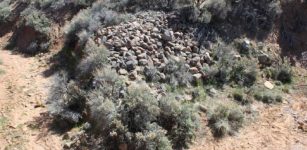 Mountain Meadows Massacre: Real Burial Sites Are Far From The LDS Monument’s Location
News | Sep 21, 2015
Mountain Meadows Massacre: Real Burial Sites Are Far From The LDS Monument’s Location
News | Sep 21, 2015 -
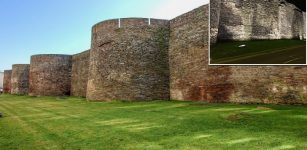 Walls Of Lugo: Finest Example Of Late Roman Fortifications – Stands The Test Of Time
Featured Stories | Sep 22, 2022
Walls Of Lugo: Finest Example Of Late Roman Fortifications – Stands The Test Of Time
Featured Stories | Sep 22, 2022 -
 Satellite Images Reveal Ancient Mesopotamian City Pre-Dating The Egyptian Pyramids
Archaeology | Mar 10, 2022
Satellite Images Reveal Ancient Mesopotamian City Pre-Dating The Egyptian Pyramids
Archaeology | Mar 10, 2022 -
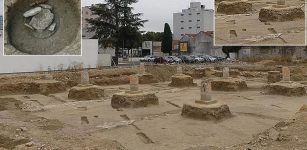 More Than 2,500 Years Old Gallic Tombs Unearthed In Nîmes, Southern France
Archaeology | Aug 17, 2020
More Than 2,500 Years Old Gallic Tombs Unearthed In Nîmes, Southern France
Archaeology | Aug 17, 2020 -
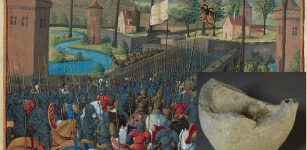 Ancient Hand Grenades: Explosive Weapons In Medieval Jerusalem During Crusades
Archaeology | Apr 26, 2022
Ancient Hand Grenades: Explosive Weapons In Medieval Jerusalem During Crusades
Archaeology | Apr 26, 2022 -
 Archimedes From Syracuse – Master Of Science Whose Legacy Still Remains Powerful
Featured Stories | Sep 20, 2017
Archimedes From Syracuse – Master Of Science Whose Legacy Still Remains Powerful
Featured Stories | Sep 20, 2017 -
 19 Cannons Shot From British Ships During The American Revolution Discovered In Savannah River
Archaeology | Apr 29, 2022
19 Cannons Shot From British Ships During The American Revolution Discovered In Savannah River
Archaeology | Apr 29, 2022 -
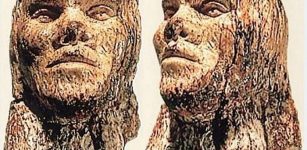 Incredible Mammoth Ivory Male Head From Dolni Vestonice, Czech Dated To 26,000 BC
Artifacts | Jun 23, 2015
Incredible Mammoth Ivory Male Head From Dolni Vestonice, Czech Dated To 26,000 BC
Artifacts | Jun 23, 2015 -
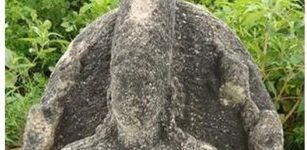 8th Century Sculpture Of Lord Vishnu Belonging To Pandya Dynasty – Unearthed
Archaeology | Sep 16, 2020
8th Century Sculpture Of Lord Vishnu Belonging To Pandya Dynasty – Unearthed
Archaeology | Sep 16, 2020 -
 Terahertz Imaging Reveals Hidden Inscription On Early Modern Funerary Cross
Archaeology | Apr 26, 2022
Terahertz Imaging Reveals Hidden Inscription On Early Modern Funerary Cross
Archaeology | Apr 26, 2022 -
 Evidence Humans Have Been Using Bear Skins For At Least 300,000 Years Discovered
Archaeology | Dec 27, 2022
Evidence Humans Have Been Using Bear Skins For At Least 300,000 Years Discovered
Archaeology | Dec 27, 2022 -
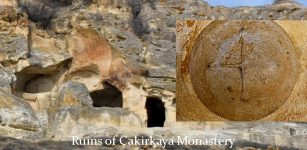 Rock-Carved Turkey’s Çakırkaya Monastery Dated To 13th Century Will Be Restored
Archaeology | Mar 18, 2020
Rock-Carved Turkey’s Çakırkaya Monastery Dated To 13th Century Will Be Restored
Archaeology | Mar 18, 2020 -
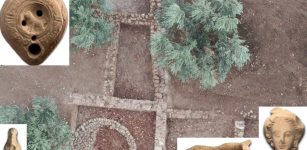 Ancient City Of Tenea Built By Trojan Prisoners Reveals More Archaeological Secrets
Archaeology | Feb 15, 2023
Ancient City Of Tenea Built By Trojan Prisoners Reveals More Archaeological Secrets
Archaeology | Feb 15, 2023 -
 Bartholomew Roberts Was Forced To Become A Pirate
Featured Stories | Aug 20, 2019
Bartholomew Roberts Was Forced To Become A Pirate
Featured Stories | Aug 20, 2019 -
 New Evidence Of Human Habitation At Panga ya Saidi Cave, Kenya That Dates Back 78,000 Years
Archaeology | May 11, 2018
New Evidence Of Human Habitation At Panga ya Saidi Cave, Kenya That Dates Back 78,000 Years
Archaeology | May 11, 2018 -
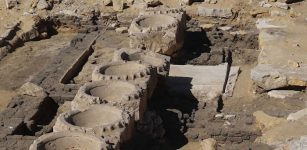 4,500-Year-Old Lost ‘Sun Temple’ Dedicated To God Ra Unearthed In Abu Gorab Necropolis
Archaeology | Aug 4, 2022
4,500-Year-Old Lost ‘Sun Temple’ Dedicated To God Ra Unearthed In Abu Gorab Necropolis
Archaeology | Aug 4, 2022

